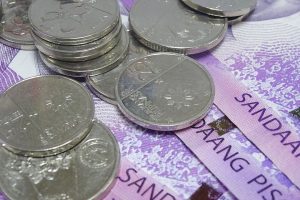




Quarterly Economic Growth Release: More BSP cuts to come
 DOWNLOAD
DOWNLOAD

Monthly Economic Update: Fed catches up
 DOWNLOAD
DOWNLOAD

Inflation Update: Steady and mellow
 DOWNLOAD
DOWNLOAD


Loan growth to pick up in 2025

Loan growth is seen to improve next year as the Philippine central bank is expected to further cut policy rates, S&P Global Ratings said.
“We think that the loan growth will start to pick up, but at a very slow rate,” S&P Global Director and Lead Analyst Ivan Tan said in a webinar on Wednesday.
“We think that most of the loan growth pick-up is going to come in 2025. That’s when we are forecasting the policy rate will be cut to 5% by next year.”
The Monetary Board last week lowered the target reverse repurchase (RRP) rate by 25 basis points (bps) to 6.25% from 6.5%, which was the highest rate in over 17 years.
BSP Governor Eli M. Remolona, Jr. earlier signaled the possibility of another 25-bp cut in either October or December.
Mr. Tan said the recent rate cut by the BSP is unlikely to have any immediate impact on loan growth.
“The Philippines is usually a country where the policy rate is 3%, give or take… So even with this 25-bp rate cut, a 6.25% policy rate versus what I would consider a normalized 3% rate is still quite high,” he said.
The country’s loan growth in the pre-pandemic period had averaged 10% to 12% annually, Mr. Tan said.
“In 2023, it only grew about 7% to 8%. By the Philippines’ standard, it’s very low. It’s very low because the policy rate in the Philippines was very, very high,” he added.
The central bank has raised borrowing costs by a cumulative 450 bps from May 2022 to October 2023 to tame inflation.
The latest data from the BSP showed that bank lending rose by 10.1% year on year to P12.09 trillion in June.
The bank lending growth in June was unchanged from May, which was the fastest pace since the 10.2% recorded in March 2023.
Mr. Tan also noted that loan growth patterns are likely to change.
“We have been observing a risk-on behavior where the Philippine banks are maintaining the large corporate loans, but growing almost twice as fast in the higher-using and higher-risk consumer segment,” he said.
“Just to note, the Philippine nonperforming loan (NPL) [ratio] is at about 3%. Consumer NPL, the delinquency rate is twice as high,” he added.
The banking industry’s NPL ratio eased to 3.51% in June from 3.57% in May. The bad loan ratio in May was the highest in nearly two years.
“We are watching that very closely because there’s kind of a risk-on behavior. Philippine banks are growing consumer loans faster to improve the yield, for yield enhancement purposes, but they are taking on incremental risk in the process also,” he added. — Luisa Maria Jacinta C. Jocson
This article originally appeared on bworldonline.com





 By BusinessWorld
By BusinessWorld